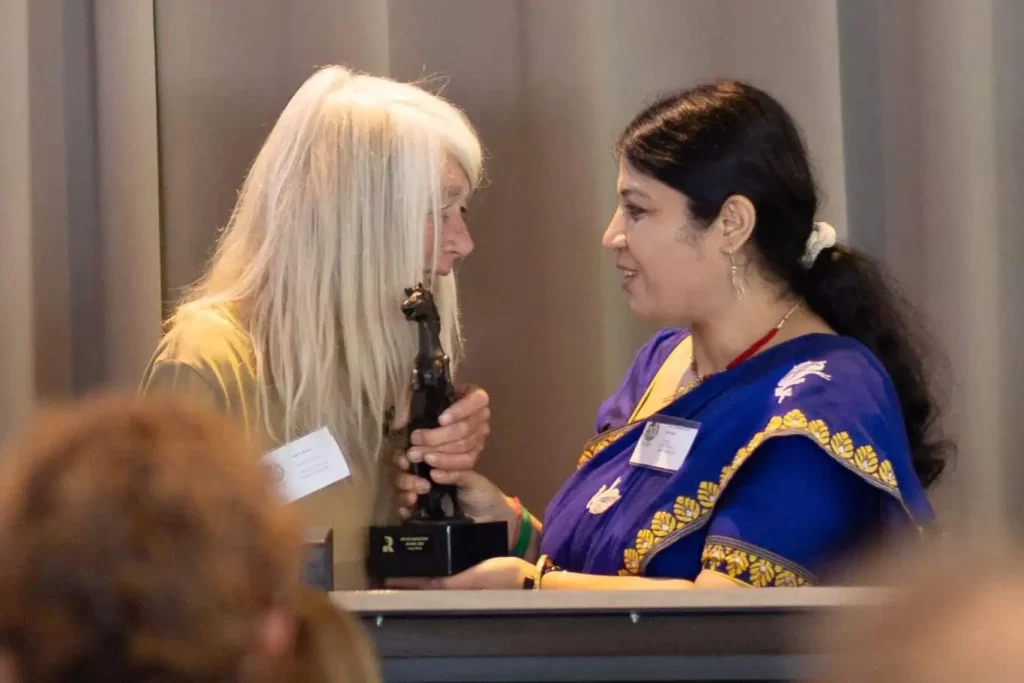Share:
Ecocultural Rewilding: Empowering Indigenous Communities in Nature Restoration

Banff National Park in Canada has undertaken a noteworthy ecocultural rewilding project, reintroducing plains bison and combining ecological and cultural perspectives. Rewilding, a discipline focused on reversing biodiversity loss and climate change, often reintroduces species with only a scientific approach, but this case study incorporates Indigenous knowledge, ceremony, and cultural monitoring.
The initiative aims to restore ecosystem health and address the near-extinction of plains bison, which hold cultural significance for Indigenous plains cultures. Banff National Park, with its large, intact area and commitment to ecological integrity, provides an ideal setting for the reintroduction. The ecocultural approach involves key steps, including scoping opportunities, stakeholder consultations, building a plan, and the actual reintroduction process.
Plains bison, recognized as keystone species and ecosystem engineers, were driven to near-extinction between 1860 and 1885, impacting both ecology and Indigenous cultures. While over 500,000 plains bison exist in North America, only 4% are managed for conservation, with the remaining 96% influenced by the ranching industry.
Banff National Park, free of many barriers to bison recovery, stands out as a rare opportunity to restore a free-roaming population. The area’s large size, ecological integrity, and commitment to maintaining Indigenous practices make it suitable for the ecocultural rewilding project.
Ecocultural rewilding
The rewilding project involves a holistic “ecocultural” approach, recognising the role of Indigenous communities in stewarding nature. The case study unfolds in several key rewilding steps, including scoping for opportunities and constraints, stakeholder and Indigenous consultation, building a plan, initial ceremony and physical preparations, and the larger Buffalo Treaty.
The engagement of Indigenous communities, represented by the Treaty 7 Nations, becomes pivotal, and their involvement extends to ceremonies, prayers, and traditional practices. The Buffalo Treaty, signed by over 40 Indigenous nations, amplifies the scope beyond Banff, advocating for recognition of plains bison as wildlife.
A significant moment in the project was the transfer of bison from Treaty 6 to Treaty 7 lands, marking collaboration between Indigenous nations. Indigenous blessing ceremonies played a crucial role in integrating spiritual perceptions and knowledge into the rewilding effort. Bison were carefully selected based on criteria such as age, gender, pregnancy, health, and genetic diversity. The transfer ceremony, accompanied by drumming and dancing, emphasized the connection between the animals and the land.
The successful reintroduction resulted in a growing bison herd, now exceeding 100 animals, with potential for Indigenous harvesting if current growth continues. The ecocultural approach has increased the resilience of the rewilding project, addressing both ecological and cultural aspects. The case study exemplifies the potential benefits of an ecocultural rewilding model, acknowledging the intricate relationship between people, wildlife, and the environment.
Ecological and cultural success
The ecocultural rewilding of plains bison in Banff National Park has proven to be both ecologically and culturally successful. Ecologically, the project marks the establishment of the world’s fifth free-roaming population of a red-listed species, with the animals thriving and showing substantial growth after five years. Apart from a few wandering bulls, they are well-anchored in the targeted reintroduction zone.
Culturally, the incorporation of Indigenous ceremonies, traditional knowledge, and the formation of an Indigenous Advisory Circle has deeply engaged Indigenous communities. This initiative not only rewilded a species but also revitalised endangered plains cultures, inspiring similar bison restoration efforts.
The project has fostered trust between Parks Canada and Indigenous nations over a decade, with a focus on incorporating the ultimate plains cultural practice – bison harvesting by Indigenous people – as an essential ecological tool for managing the growing herd.
This approach has elevated the rewilding of Banff bison beyond an ecological endeavour, framing it as a human rights issue and emphasising the importance of resolving policy differences between jurisdictions. The ecocultural approach has emerged as a collective strength, blending ecological and cultural restoration efforts for a more resilient and diverse foundation.
Source: Frontiers in Conservation Science
Featured photo: Leslie Driskill/Unsplash






